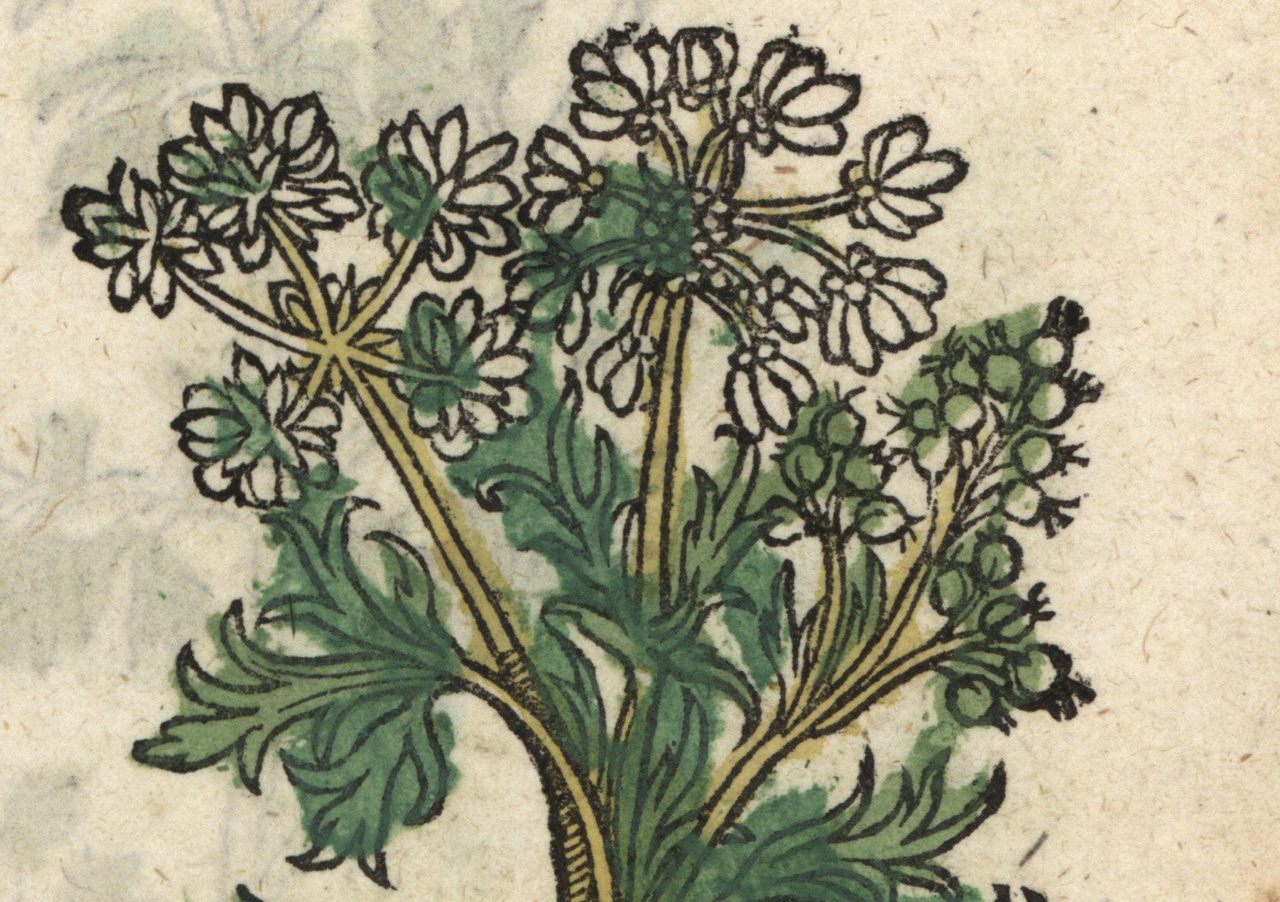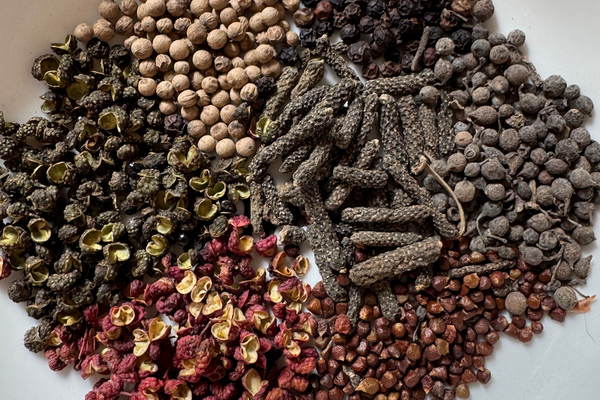Why Italy Fell Out of Love With Cilantro
Coriander went from ancient staple to persona non grata.
When you think of Italian herbs, cilantro (also known as coriander) is probably not the first one that comes to mind. Yet crack open the fifth-century Roman cookbook Apicius, and you’ll find it included in 18 percent of all recipes. Roman chefs prized both the citrusy seeds and pungent leaves of the plant they called coriandrum for sauces, salads, roasts, and flavored beverages, among other dishes.
Compare this with Pellegrino Artusi’s Science in the Kitchen and the Art of Eating Well, published in 1891 and often considered the foundational text of modern Italian cuisine. Coriander leaves are absent from the book’s nearly 800 recipes, and the seeds show up in just four desserts. Artusi also warned readers to beware of buying cinnamon powder from unscrupulous merchants who “throw in handfuls of coriander seeds to increase the volume with a cheap ingredient.” From this reference, we can infer that there was no lack of coriander in late 19th-century Italy. But at some point between Apicius and Artusi, Italians largely stopped cooking with it.
“In dishes, I would be surprised to ever find [coriander] in something from 1700 onwards,” says Karima Moyer-Nocchi, a culinary historian at the University of Siena in Italy. Moyer-Nocchi explains that while coriander is not entirely absent from Italian cuisine today, its uses are far more limited than in past centuries. “Predominantly in central Italy, porchetta is going to be prepared with slightly crushed coriander seeds,” says Moyer-Nocchi. “Around the time when people are slaughtering their pigs, you’ll find big bags of coriander at the supermarket.” The leaves, on the other hand, “are absolutely not being used,” she adds. “I have to drive 45 minutes to a grocery store in another city to find it, or grow it myself.”

Native to Europe, Asia, and North Africa, coriander has a long and widespread history of human cultivation. Latin coriandrum, the source of many modern names for the plant, was borrowed from the Ancient Greek koriandron or koriadnon. The Romans developed a taste for the ingredient through the extensive Greek influence on their cuisine.
During the Roman era, Moyer-Nocchi says, “coriander is being grown locally in Italy, whereas other spices are coming in through the trade routes.” Coriander was also imported due to high demand. Pliny the Elder wrote in the first century that the herb was extensively grown in Roman Egypt. Archaeologists have found coriander seeds alongside those of other herbs like dill and fennel at Roman sites throughout Europe, including Britain. The frequency with which these seeds are found, and the fact that they have been discovered in remote settlements far from centers of power, demonstrates that coriander was consumed by all levels of Roman society.
Aside from food, coriander was cultivated for medicinal purposes like soothing stomach aches, and for food preservation thanks to the seeds’ antibacterial properties, which is why they are still used in some of Italy’s regional salt-cured meats.
Moyer-Nocchi describes a combination of factors that contributed to coriander’s decline after the fall of Rome. One was that the former empire absorbed influences from Germanic tribes to the north like the Visigoths, “who don’t have that tradition” of cooking with coriander. Another was that coriander’s local availability made it less elite than other spices. “Culturally, it’s not an expression of anyone’s wealth,” says Moyer-Nocchi. Instead, Asian spices like cinnamon and cardamom, imported from afar at great cost, became medieval status symbols.

Moyer-Nocchi explains that medieval Italians divided spices into two categories: “sweet” and “strong.” Powdered blends of sweet spices—including sugar—were used in a majority of dishes, but “coriander is put over into the strong spices with pepper,” she says, “so it’s going to be used less.” Coriander leaves fell even further out of fashion than the seeds because their distinct flavor clashed with the trendy imported ingredients of the time, such as rosewater. In 1544, physician and botanist Pietro Andrea Mattioli described the leaves as smelling like bed bugs or stink bugs, a comparison echoed by later authors.
Coriander leaf was already mostly absent from Italian cuisine by the Renaissance, but the seeds continued to be used as a spice. They were also coated in sugar to make confetti, or “comfits” in English. These were chewed at banquets as an after-dinner mouth freshener and digestive, similar to mukhwas, the mixture of sweetened whole spices chewed in South Asia today for the same purpose. At festive celebrations, coriander comfits were thrown and scattered, giving rise to the English word “confetti” for the paper particles that later replaced them. In modern Italy, paper confetti is still called coriandoli, meaning “coriander seeds,” while confetti usually refers to a different kind of comfit, the sugared almonds given out at weddings and communions.
Italy enjoyed a reputation as a center of culinary innovation and refinement until the end of the 16th century, says Moyer-Nocchi, when France replaced it as Europe’s trend-setter. “And that’s where spices just fall by the wayside,” she says. French chefs of the 17th and 18th centuries deliberately set themselves apart from the earlier Italian tradition by focusing on fresh herbs instead of dried spices and specific ingredient pairings instead of sweet and strong spice blends.
As Italian chefs looked to the example of the French, “Italy frankly lost its culinary identity with the utter dominance of France for the next two centuries,” says Moyer-Nocchi. And when a distinct Italian culinary identity emerged with the unification of the modern nation in the 19th century, long-abandoned coriander was not revived, but left behind.

Modern Italians see coriander as a foreign ingredient that separates them from other groups of people; what Moyer-Nocchi calls a “culinary marker.” “That comes down to a very basic sort of [idea], ‘What are the flavors that are going to express my identity?” she says. These days, “coriander just doesn’t fit into the culinary grammar of how Italians choose to express themselves.”
Moyer-Nocchi points out that coriander is not the only herb whose popularity has ebbed and flowed in Italy over the centuries. Marjoram was once widely used, but “no one necessarily associates that with Italy anymore,” she says. On the other hand, some of the flavors modern Italians use to express themselves have not actually been “Italian” for very long. Basil, which originated in Asia, has only been part of Italian cuisine for a few hundred years. “It’s very young, and yet seems so Italian,” Moyer-Nocchi says.
From Thailand with chilies to Belgium with chocolate, many modern nations have embraced once-foreign ingredients, folding them into their culinary identity until their absence becomes unthinkable. The curious history of cilantro in Italy shows that the reverse is also true. Sometimes, an ingredient becomes so unpopular that we forget it’s been there all along.
Gastro Obscura covers the world’s most wondrous food and drink.
Sign up for our regular newsletter.






























Follow us on Twitter to get the latest on the world's hidden wonders.
Like us on Facebook to get the latest on the world's hidden wonders.
Follow us on Twitter Like us on Facebook